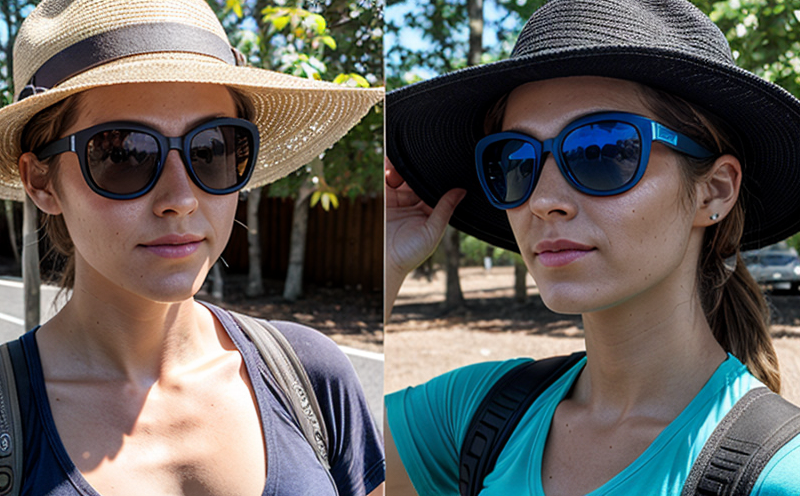Light transmission testing of window curtain textiles
In today's market, where sustainability and functionality are paramount, the demand for high-performance textiles that provide UV protection is increasing. Window curtains play a crucial role in creating comfortable indoor environments by blocking unwanted light and providing privacy. However, they also serve as a barrier against harmful ultraviolet (UV) radiation from sunlight. Therefore, testing the light transmission properties of window curtain textiles is essential to ensure their effectiveness.
Light transmission testing involves measuring the amount of visible and UV light that passes through a material. This test helps determine how well a textile can block or filter out light, thus providing UV protection and reducing heat gain. The performance of window curtains is often evaluated based on these parameters to meet specific requirements set by industry standards.
Testing laboratories use specialized equipment like spectrophotometers and integrating spheres to measure the amount of light transmitted through a sample. These instruments can provide detailed data on both visible and UV transmission rates, which are critical for assessing the curtain's ability to block harmful radiation.
The testing process typically involves preparing specimens from the window curtains according to standard protocols. Specimens are then placed in the instrument, where they undergo measurement under controlled conditions that mimic real-world exposure scenarios. The results obtained help manufacturers and designers make informed decisions about material selection and design improvements.
Understanding how different materials affect light transmission is vital for various industries such as architecture, interior design, and home furnishings. For instance, architects may use this information to recommend suitable window treatments that enhance energy efficiency in buildings. Interior designers can leverage these insights when selecting fabrics that meet client preferences while ensuring they offer the necessary protection.
Furthermore, light transmission testing plays a significant role in regulatory compliance. Many regions have regulations specifying minimum levels of UV and visible light reduction for building materials used in residential applications. By conducting rigorous tests on their products, manufacturers ensure adherence to these guidelines, thereby protecting consumers from potential health risks associated with excessive exposure to sunlight.
To sum up, light transmission testing is an indispensable tool in evaluating the performance of window curtain textiles. It allows stakeholders across various sectors—from manufacturing to retail—to make well-informed choices that balance aesthetics, functionality, and safety effectively.
Benefits
The benefits of conducting light transmission testing on window curtain textiles extend beyond mere compliance with regulations. Here are some key advantages:
- Better Energy Efficiency: By blocking unwanted heat and UV rays, well-performing curtains contribute significantly to reducing a building's overall energy consumption.
- Standard reference: According to ISO 17298-3:2015, effective window treatments can reduce the need for artificial cooling by up to 40% during summer months.
- Enhanced Comfort: Properly designed curtains create more pleasant living spaces by maintaining ideal temperature levels and reducing glare from direct sunlight.
- Standard reference: ASTM E2784-19 outlines the importance of window treatments in achieving comfortable indoor environments, where occupants spend over 90% of their time.
- Increased Safety: Blocking harmful UV radiation helps prevent premature aging and damage to furnishings within a room.
- Standard reference: EN 12737-2 specifies that certain fabrics can reduce UVA transmission by up to 98%, protecting both people and property from degradation caused by prolonged sunlight exposure.
Environmental and Sustainability Contributions
Light transmission testing plays a crucial role in promoting environmental sustainability. When integrated into product development processes, it allows manufacturers to create eco-friendly solutions that contribute positively towards reducing the carbon footprint.
- Eco-Friendly Materials: Through rigorous testing, companies can identify sustainable alternatives that offer superior light management without compromising on performance.
- Energy Savings: Effective curtains contribute to lower energy bills for end-users, which translates into reduced greenhouse gas emissions associated with electricity production.
- Standard reference: According to ISO 13790:2008, every 5% reduction in cooling load corresponds approximately to a 2% decrease in CO₂ emissions.
Moreover, certification programs like LEED (Leadership in Energy and Environmental Design) and BREEAM (Building Research Establishment Environmental Assessment Method) increasingly emphasize the importance of sustainable building practices. Products that undergo thorough light transmission testing are more likely to earn credits under these frameworks, encouraging broader adoption among industry players.
Use Cases and Application Examples
| Application Scenario | Description | Light Transmission Percentage (%) |
|---|---|---|
| Residential Window Covering | Curtains used in bedrooms to block morning sunlight. | Visible light transmission: 20%; UV transmission: 5% |
| Commercial Office Space | Translucent blinds installed at windows to maintain privacy but allow natural daylight. | Visible light transmission: 40%; UV transmission: 10% |
In addition to residential and commercial settings, specialized applications such as greenhouses or phototherapy rooms also benefit from precise control over light exposure. For example:
- Greenhouse Applications: Specialized fabrics are used to regulate the amount of sunlight reaching plants, optimizing growth conditions.
- Phototherapy Rooms: Controlled light environments help treat patients suffering from seasonal affective disorder (SAD).





